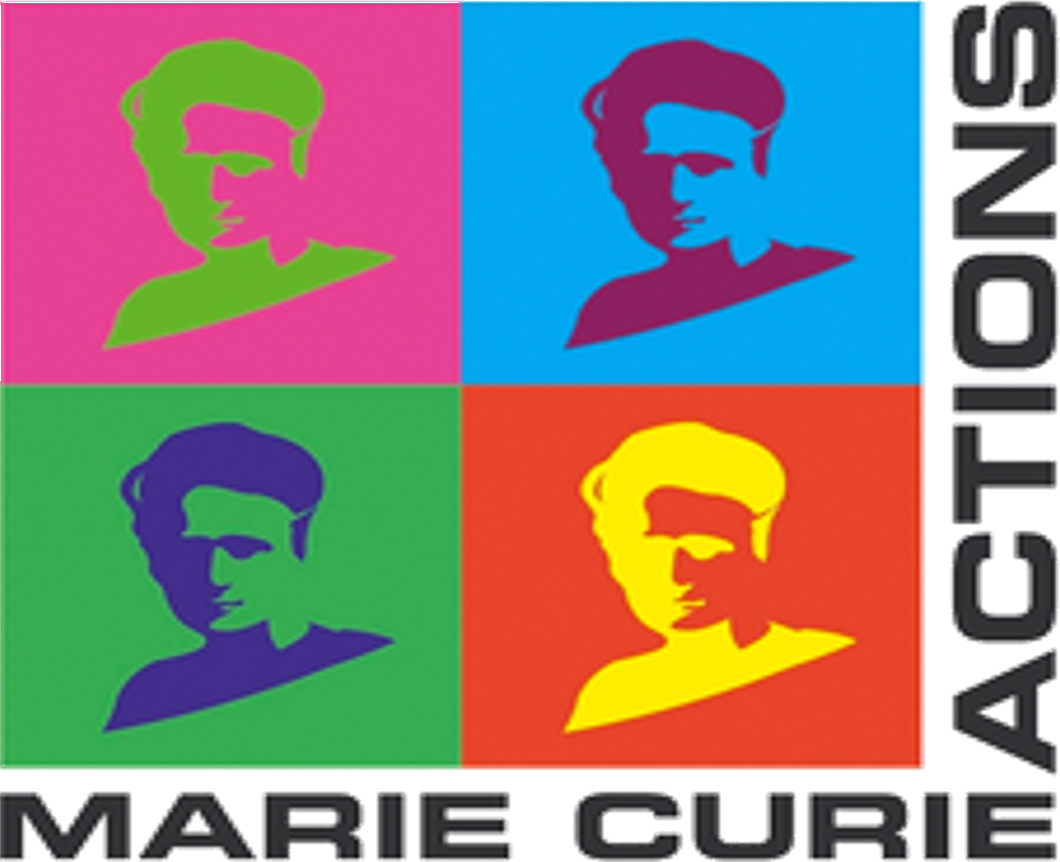2024
The deepest layer of the cortex (layer 6b [L6b]) contains relatively few neurons, but it is the only cortical layer responsive to the potent wake-promoting neuropeptide orexin/hypocretin. Can these few neurons significantly influence brain state? Here, we show that L6b-photoactivation causes a surprisingly robust enhancement of attention-associated high-gamma oscillations and population spiking while abolishing slow waves in sleep-deprived mice. To explain this powerful impact on brain state, we investigated L6b’s synaptic output using optogenetics, electrophysiology, and monoCaTChR ex vivo. We found powerful output in the higher-order thalamus and apical dendrites of L5 pyramidal neurons, via L1a and L5a, as well as in superior colliculus and L6 interneurons. L6b subpopulations with distinct morphologies and short- and long-term plasticities project to these diverse targets. The L1a-targeting subpopulation triggered powerful NMDA-receptor-dependent spikes that elicited burst firing in L5. We conclude that orexin/hypocretin-activated cortical neurons form a multifaceted, fine-tuned circuit for the sustained control of the higher-order thalamocortical system.
Layer 6b controls brain state via apical dendrites and the higher-order thalamocortical system. https://doi.org/10.1016/j.neuron.2023.11.021.
Accurate assessment of post-stroke deficits is crucial in translational research. Recent advances in machine learning offer precise quantification of rodent motor behavior post-stroke, yet detecting lesion-specific upper extremity deficits remains unclear. Employing proximal middle cerebral artery occlusion (MCAO) and cortical photothrombosis (PT) in mice, we assessed post-stroke impairments via the Staircase test. Lesion locations were identified using 7 T-MRI. Machine learning was applied to reconstruct forepaw kinematic trajectories and feature analysis was achieved with MouseReach, a new data-processing toolbox. Lesion reconstructions pinpointed ischemic centers in the striatum (MCAO) and sensorimotor cortex (PT). Pellet retrieval alterations were observed, but were unrelated to overall stroke volume. Instead, forepaw slips and relative reaching success correlated with increasing cortical lesion size in both models. Striatal lesion size after MCAO was associated with prolonged reach durations that occurred with delayed symptom onset. Further analysis on the impact of selective serotonin reuptake inhibitors in the PT model revealed no clear treatment effects but replicated strong effect sizes of slips for post-stroke deficit detection. In summary, refined movement analysis unveiled specific deficits in two widely-used mouse stroke models, emphasizing the value of deep behavioral profiling in preclinical stroke research to enhance model validity for clinical translation.
Refined movement analysis in the staircase test reveals differential motor deficits in mouse models of stroke. https://doi.org/10.1177/0271678x241254718.
2025
Flexible learning relies on integrating sensory and contextual information to adjust behavioral output in different environments. The anterolateral motor cortex (ALM) is a frontal area critical for action selection in rodents. Here we show that inputs critical to decision-making converge on the apical tuft dendrites of L5b pyramidal neurons in ALM. We therefore investigated the role of these dendrites in a rule-switching paradigm. Activation of dendrite-inhibiting layer 1 interneurons impaired relearning, without affecting previously learned behavior. Remarkably, this inhibition profoundly suppressed calcium activity selectively in dendritic shafts but not spines while reducing burst firing. Moreover, excitatory synaptic inputs to tuft dendrites exhibited rule-dependent clustering. We conclude that active dendritic integration is a key computational component of flexible learning.
Tuft dendrites in frontal motor cortex enable flexible learning. https://doi.org/10.1101/2025.03.13.642781.
2016
Natural behavior occurs in multiple sensory and motor modalities and in particular is dependent on sensory feedback that constantly adjusts behavior. To investigate the underlying neuronal correlates of natural behavior, it is useful to have access to state-of-the-art recording equipment (e.g., 2-photon imaging, patch recordings, etc.) that frequently requires head fixation. This limitation has been addressed with various approaches such as virtual reality/air ball or treadmill systems. However, achieving multimodal realistic behavior in these systems can be challenging. These systems are often also complex and expensive to implement. Here we present “Air-Track,” an easy-to-build head-fixed behavioral environment that requires only minimal computational processing. The Air-Track is a lightweight physical maze floating on an air table that has all the properties of the “real” world, including multiple sensory modalities tightly coupled to motor actions. To test this system, we trained mice in Go/No-Go and two-alternative forced choice tasks in a plus maze. Mice chose lanes and discriminated apertures or textures by moving the Air-Track back and forth and rotating it around themselves. Mice rapidly adapted to moving the track and used visual, auditory, and tactile cues to guide them in performing the tasks. A custom-controlled camera system monitored animal location and generated data that could be used to calculate reaction times in the visual and somatosensory discrimination tasks. We conclude that the Air-Track system is ideal for eliciting natural behavior in concert with virtually any system for monitoring or manipulating brain activity.
Air-Track: a real-world floating environment for active sensing in head-fixed mice. https://doi.org/10.1152/jn.00088.2016.
2017
Abstract Here, we describe an automated optical method for tracking animal behavior in both head-fixed and freely moving animals, in real time and offline. It takes advantage of an off-the-shelf camera system, the Pixy camera, designed as a fast vision sensor for robotics that uses a color-based filtering algorithm at 50 Hz to track objects. Using customized software, we demonstrate the versatility of our approach by first tracking the rostro-caudal motion of individual adjacent row (D1, D2) or arc whiskers (β, γ), or a single whisker and points on the whisker pad, in head-fixed mice performing a tactile task. Next, we acquired high-speed video and Pixy data simultaneously and applied the pixy-based real-time tracking to high-speed video data. With this approach, we expand the temporal resolution of the Pixy camera and track motion ( post hoc ) at the limit of high-speed video frame rates. Finally, we show that this system is flexible: it can be used to track individual whisker or limb position without any sophisticated object tracking algorithm, it can be used in many lighting conditions including infrared (IR); it can be used to track head rotation and location of multiple animals simultaneously. Our system makes behavioral monitoring possible in virtually any biological setting.
Pixying Behavior: A Versatile Real-Time and <i>Post Hoc</i> Automated Optical Tracking Method for Freely Moving and Head Fixed Animals. https://doi.org/10.1523/ENEURO.0245-16.2017.
Key points The genetically encoded fluorescent calcium integrator calcium‐modulated photoactivatable ratiobetric integrator (CaMPARI) reports calcium influx induced by synaptic and neural activity. Its fluorescence is converted from green to red in the presence of violet light and calcium. The rate of conversion – the sensitivity to activity – is tunable and depends on the intensity of violet light. Synaptic activity and action potentials can independently initiate significant CaMPARI conversion. The level of conversion by subthreshold synaptic inputs is correlated to the strength of input, enabling optical readout of relative synaptic strength. When combined with optogenetic activation of defined presynaptic neurons, CaMPARI provides an all‐optical method to map synaptic connectivity. Abstract The calcium‐modulated photoactivatable ratiometric integrator (CaMPARI) is a genetically encoded calcium integrator that facilitates the study of neural circuits by permanently marking cells active during user‐specified temporal windows. Permanent marking enables measurement of signals from large swathes of tissue and easy correlation of activity with other structural or functional labels. One potential application of CaMPARI is labelling neurons postsynaptic to specific populations targeted for optogenetic stimulation, giving rise to all‐optical functional connectivity mapping. Here, we characterized the response of CaMPARI to several common types of neuronal calcium signals in mouse acute cortical brain slices. Our experiments show that CaMPARI is effectively converted by both action potentials and subthreshold synaptic inputs, and that conversion level is correlated to synaptic strength. Importantly, we found that conversion rate can be tuned: it is linearly related to light intensity. At low photoconversion light levels CaMPARI offers a wide dynamic range due to slower conversion rate; at high light levels conversion is more rapid and more sensitive to activity. Finally, we employed CaMPARI and optogenetics for functional circuit mapping in ex vivo acute brain slices, which preserve in vivo ‐like connectivity of axon terminals. With a single light source, we stimulated channelrhodopsin‐2‐expressing long‐range posteromedial (POm) thalamic axon terminals in cortex and induced CaMPARI conversion in recipient cortical neurons. We found that POm stimulation triggers robust photoconversion of layer 5 cortical neurons and weaker conversion of layer 2/3 neurons. Thus, CaMPARI enables network‐wide, tunable, all‐optical functional circuit mapping that captures supra‐ and subthreshold depolarization. , Key points The genetically encoded fluorescent calcium integrator calcium‐modulated photoactivatable ratiobetric integrator (CaMPARI) reports calcium influx induced by synaptic and neural activity. Its fluorescence is converted from green to red in the presence of violet light and calcium. The rate of conversion – the sensitivity to activity – is tunable and depends on the intensity of violet light. Synaptic activity and action potentials can independently initiate significant CaMPARI conversion. The level of conversion by subthreshold synaptic inputs is correlated to the strength of input, enabling optical readout of relative synaptic strength. When combined with optogenetic activation of defined presynaptic neurons, CaMPARI provides an all‐optical method to map synaptic connectivity.
All‐optical functional synaptic connectivity mapping in acute brain slices using the calcium integrator CaMPARI. https://doi.org/10.1113/JP273116.
2018
This review article addresses the function of the layers of the cerebral cortex. We develop the perspective that cortical layering needs to be understood in terms of its functional anatomy, i.e., the terminations of synaptic inputs on distinct cellular compartments and their effect on cortical activity. The cortex is a hierarchical structure in which feed forward and feedback pathways have a layer-specific termination pattern. We take the view that the influence of synaptic inputs arriving at different cortical layers can only be understood in terms of their complex interaction with cellular biophysics and the subsequent computation that occurs at the cellular level. We use high-resolution fMRI, which can resolve activity across layers, as a case study for implementing this approach by describing how cognitive events arising from the laminar distribution of inputs can be interpreted by taking into account the properties of neurons that span different layers. This perspective is based on recent advances in measuring subcellular activity in distinct feed-forward and feedback axons and in dendrites as they span across layers.
A Perspective on Cortical Layering and Layer-Spanning Neuronal Elements. https://doi.org/10.3389/fnana.2018.00056.
Abstract Marking functionally distinct neuronal ensembles with high spatiotemporal resolution is a key challenge in systems neuroscience. We recently introduced CaMPARI, an engineered fluorescent protein whose green-to-red photoconversion depends on simultaneous light exposure and elevated calcium, which enabled marking active neuronal populations with single-cell and subsecond resolution. However, CaMPARI (CaMPARI1) has several drawbacks, including background photoconversion in low calcium, slow kinetics and reduced fluorescence after chemical fixation. In this work, we develop CaMPARI2, an improved sensor with brighter green and red fluorescence, faster calcium unbinding kinetics and decreased photoconversion in low calcium conditions. We demonstrate the improved performance of CaMPARI2 in mammalian neurons and in vivo in larval zebrafish brain and mouse visual cortex. Additionally, we herein develop an immunohistochemical detection method for specific labeling of the photoconverted red form of CaMPARI. The anti-CaMPARI-red antibody provides strong labeling that is selective for photoconverted CaMPARI in activated neurons in rodent brain tissue.
Improved methods for marking active neuron populations. https://doi.org/10.1038/s41467-018-06935-2.
2019
A central function of the brain is to plan, predict, and imagine the effect of movement in a dynamically changing environment. Here we show that in mice head-fixed in a plus-maze, floating on air, and trained to pick lanes based on visual stimuli, the asymmetric movement, and position of whiskers on the two sides of the face signals whether the animal is moving, turning, expecting reward, or licking. We show that (1) whisking asymmetry is coordinated with behavioral state, and that behavioral state can be decoded and predicted based on asymmetry, (2) even in the absence of tactile input, whisker positioning and asymmetry nevertheless relate to behavioral state, and (3) movement of the nose correlates with asymmetry, indicating that facial expression of the mouse is itself correlated with behavioral state. These results indicate that the movement of whiskers, a behavior that is not instructed or necessary in the task, can inform an observer about what a mouse is doing in the maze. Thus, the position of these mobile tactile sensors reflects a behavioral and movement-preparation state of the mouse. SIGNIFICANCE STATEMENT Behavior is a sequence of movements, where each movement can be related to or can trigger a set of other actions. Here we show that, in mice, the movement of whiskers (tactile sensors used to extract information about texture and location of objects) is coordinated with and predicts the behavioral state of mice: that is, what mice are doing, where they are in space, and where they are in the sequence of behaviors.
Whisking Asymmetry Signals Motor Preparation and the Behavioral State of Mice. https://doi.org/10.1523/JNEUROSCI.1809-19.2019.
The advent of optogenetic methods has made it possible to use endogeneously produced molecules to image and manipulate cellular, subcellular, and synaptic activity. It has also led to the development of photoactivatable calcium-dependent indicators that mark active synapses, neurons, and circuits. Furthermore, calcium-dependent photoactivation can be used to trigger gene expression in active neurons. Here we describe two sets of protocols, one using CaMPARI and a second one using Cal-Light. CaMPARI, a calcium-modulated photoactivatable ratiometric integrator, enables rapid network-wide, tunable, all-optical functional circuit mapping. Cal-Light, a photoactivatable calcium sensor, while slower to respond than CaMPARI, has the capacity to trigger the expression of genes, including effectors, activators, indicators, or other constructs. Here we describe the rationale and provide procedures for using these two calcium-dependent constructs (1) in vitro in dissociated primary neuronal cell cultures (CaMPARI & Cal-Light); (2) in vitro in acute brain slices for circuit mapping (CaMPARI); (3) in vivo for triggering photoconversion or gene expression (CaMPARI & Cal-Light); and finally, (4) for recovering photoconverted neurons post-fixation with immunocytochemistry (CaMPARI). The approaches and protocols we describe are examples of the potential uses of both CaMPARI & Cal-Light. The ability to mark and manipulate neurons that are active during specific epochs of behavior has a vast unexplored experimental potential.
Optically Induced Calcium-Dependent Gene Activation and Labeling of Active Neurons Using CaMPARI and Cal-Light. https://doi.org/10.3389/fnsyn.2019.00016.
The topographic map in layer 4 of somatosensory cortex is usually specified early postnatally and stable thereafter. Genital cortex, however, undergoes a sex-hormone- and sexual-touch-dependent pubertal expansion. Here, we image pubertal development of genital cortex in Scnn1a-Tg3-Cre mice, where transgene expression has been shown to be restricted to layer 4 neurons with primary sensory cortex identity. Interestingly, during puberty, the number of Scnn1a+ neurons roughly doubled within genital cortex. The increase of Scnn1a+ neurons was gradual and rapidly advanced by initial sexual experience. Neurons that gained Scnn1a expression comprised stellate and pyramidal neurons in layer 4. Unlike during neonatal development, pyramids did not retract their apical dendrites during puberty. Calcium imaging revealed stronger genital-touch responses in Scnn1a+ neurons in males versus females and a developmental increase in responsiveness in females. The first sexual interaction is a unique physical experience that often creates long-lasting memories. We suggest such experience uniquely alters somatosensory body maps.
Effects of Sexual Experience and Puberty on Mouse Genital Cortex revealed by Chronic Imaging. https://doi.org/10.1016/j.cub.2019.08.062.
2020
Layer 6b (L6b), the deepest neocortical layer, projects to cortical targets and higher-order thalamus and is the only layer responsive to the wake-promoting neuropeptide orexin/hypocretin. These characteristics suggest that L6b can strongly modulate brain state, but projections to L6b and their influence remain unknown. Here, we examine the inputs to L6b ex vivo in the mouse primary somatosensory cortex with rabies-based retrograde tracing and channelrhodopsin-assisted circuit mapping in brain slices. We find that L6b receives its strongest excitatory input from intracortical long-range projection neurons, including those in the contralateral hemisphere. In contrast, local intracortical input and thalamocortical input were significantly weaker. Moreover, our data suggest that L6b receives far less thalamocortical input than other cortical layers. L6b was most strongly inhibited by PV and SST interneurons. This study shows that L6b integrates long-range intracortical information and is not part of the traditional thalamocortical loop.
Layer 6b Is Driven by Intracortical Long-Range Projection Neurons. https://doi.org/10.1016/j.celrep.2020.02.044.
In the course of a day, brain states fluctuate, from conscious awake information-acquiring states to sleep states, during which previously acquired information is further processed and stored as memories. One hypothesis is that memories are consolidated and stored during “offline” states such as sleep, a process thought to involve transfer of information from the hippocampus to other cortical areas. Up and Down states (UDS), patterns of activity that occur under anesthesia and sleep states, are likely to play a role in this process, although the nature of this role remains unclear. Here we review what is currently known about these mechanisms in three anatomically distinct but interconnected cortical areas: somatosensory cortex, entorhinal cortex, and the hippocampus. In doing so, we consider the role of this activity in the coordination of “replay” during sleep states, particularly during hippocampal sharp-wave ripples. We conclude that understanding the generation and propagation of UDS may provide key insights into the cortico-hippocampal dialogue linking archi- and neocortical areas during memory formation.
Up and Down States and Memory Consolidation Across Somatosensory, Entorhinal, and Hippocampal Cortices. https://doi.org/10.3389/fnsys.2020.00022.
In this review article, we highlight several disparate ideas that are linked to changes in brain state (i.e., sleep to arousal, Down to Up, synchronized to de-synchronized). In any discussion of the brain state, we propose that the cortical pyramidal neuron has a central position. EEG recordings, which typically assess brain state, predominantly reflect the activity of cortical pyramidal neurons. This means that the dominant rhythmic activity that characterizes a particular brain state ultimately has to manifest globally across the pyramidal neuron population. During state transitions, it is the long-range connectivity of these neurons that broadcast the resultant changes in activity to many subcortical targets. Structures like the thalamus, brainstem/hypothalamic neuromodulatory systems, and respiratory systems can also strongly influence brain state, and for many decades we have been uncovering bidirectional pathways that link these structures to state changes in the cerebral cortex. More recently, movement and active behaviors have emerged as powerful drivers of state changes. Each of these systems involve different circuits distributed across the brain. Yet, for a system-wide change in brain state, there must be a collaboration between these circuits that reflects and perhaps triggers the transition between brain states. As we expand our understanding of how brain state changes, our current challenge is to understand how these diverse sets of circuits and pathways interact to produce the changes observed in cortical pyramidal neurons.
Perspective on the Multiple Pathways to Changing Brain States. https://doi.org/10.3389/fnsys.2020.00023.
2021
Computer vision approaches have made significant inroads into offline tracking of behavior and estimating animal poses. In particular, because of their versatility, deep-learning approaches have been gaining attention in behavioral tracking without any markers. Here, we developed an approach using DeepLabCut for real-time estimation of movement. We trained a deep-neural network (DNN) offline with high-speed video data of a mouse whisking, then transferred the trained network to work with the same mouse, whisking in real-time. With this approach, we tracked the tips of three whiskers in an arc and converted positions into a TTL output within behavioral time scales, i.e., 10.5 ms. With this approach, it is possible to trigger output based on movement of individual whiskers, or on the distance between adjacent whiskers. Flexible closed-loop systems like the one we have deployed here can complement optogenetic approaches and can be used to directly manipulate the relationship between movement and neural activity.
Real-Time Closed-Loop Feedback in Behavioral Time Scales Using DeepLabCut. https://doi.org/10.1523/ENEURO.0415-20.2021.
Prompt execution of planned motor action is essential for survival. The interactions between frontal cortical circuits and the basal ganglia are central to goal-oriented action selection and initiation.1, 2, 3, 4 In rodents, the ventromedial thalamic nucleus (VM) is one of the critical nodes that conveys the output of the basal ganglia to the frontal cortical areas including the anterior lateral motor cortex (ALM).5, 6, 7, 8, 9 Recent studies showed the critical role of ALM and its interplay with the motor thalamus in preparing sensory-cued rewarded movements, specifically licking.10, 11, 12 Work in primates suggests that the basal ganglia output to the motor thalamus transmits an urgency or vigor signal,13, 14, 15 which leads to shortened reaction times and faster movement initiation. As yet, little is known about what signals are transmitted from the motor thalamus to the cortex during cued movements and how these signals contribute to movement initiation. In the present study, we employed a tactile-cued licking task in mice while monitoring reaction times of the initial lick. We found that inactivation of ALM delayed the initiation of cued licking. Two-photon Ca2+ imaging of VM axons revealed that the majority of the axon terminals in ALM were transiently active during licking. Their activity was predictive of the time of the first lick. Chemogenetic and optogenetic manipulation of VM axons in ALM indicated that VM inputs facilitate the initiation of cue-triggered and impulsive licking in trained mice. Our results suggest that VM thalamocortical inputs increase the probability and vigor of initiating planned motor responses.
Thalamic input to motor cortex facilitates goal-directed action initiation. https://doi.org/10.1016/j.cub.2021.06.089.
2022
Abstract Navigation through complex environments requires motor planning, motor preparation, and the coordination between multiple sensory–motor modalities. For example, the stepping motion when we walk is coordinated with motion of the torso, arms, head, and eyes. In rodents, movement of the animal through the environment is coordinated with whisking. Even head-fixed mice navigating a plus maze position their whiskers asymmetrically with the bilateral asymmetry signifying the upcoming turn direction. Here we report that, in addition to moving their whiskers, on every trial mice also move their eyes conjugately in the direction of the upcoming turn. Not only do mice move their eyes, but they coordinate saccadic eye movement with the asymmetric positioning of the whiskers. Our analysis shows that asymmetric positioning of whiskers predicted the turn direction that mice will make at an earlier stage than eye movement. Consistent with these results, our observations also revealed that whisker asymmetry increases before saccadic eye movement. Importantly, this work shows that when rodents plan for active behavior, their motor plans can involve both eye and whisker movement. We conclude that, when mice are engaged in and moving through complex real-world environments, their behavioral state can be read out in the movement of both their whiskers and eyes.
Coordination between Eye Movement and Whisking in Head-Fixed Mice Navigating a Plus Maze. https://doi.org/10.1523/ENEURO.0089-22.2022.
The use of head fixation has become routine in systems neuroscience. However, whether the behavior changes with head fixation, whether animals can learn aspects of a task while freely moving and transfer this knowledge to the head fixed condition, has not been examined in much detail. Here, we used a novel floating platform, the “Air-Track”, which simulates free movement in a real-world environment to address the effect of head fixation and developed methods to accelerate training of behavioral tasks for head fixed mice. We trained mice in a Y maze two choice discrimination task. One group was trained while head fixed and compared to a separate group that was pre-trained while freely moving and then trained on the same task while head fixed. Pre-training significantly reduced the time needed to relearn the discrimination task while head fixed. Freely moving and head fixed mice displayed similar behavioral patterns, however, head fixation significantly slowed movement speed. The speed of movement in the head fixed mice depended on the weight of the platform. We conclude that home-cage pre-training improves learning performance of head fixed mice and that while head fixation obviously limits some aspects of movement, the patterns of behavior observed in head fixed and freely moving mice are similar.
Efficient training approaches for optimizing behavioral performance and reducing head fixation time. https://doi.org/10.1371/journal.pone.0276531.
2023
Abstract Neocortical layer 1 has been proposed to be at the center for top-down and bottom-up integration. It is a locus for interactions between long-range inputs, layer 1 interneurons, and apical tuft dendrites of pyramidal neurons. While input to layer 1 has been studied intensively, the level and effect of input to this layer has still not been completely characterized. Here we examined the input to layer 1 of mouse somatosensory cortex with retrograde tracing and optogenetics. Our assays reveal that local input to layer 1 is predominantly from layers 2/3 and 5 pyramidal neurons and interneurons, and that subtypes of local layers 5 and 6b neurons project to layer 1 with different probabilities. Long-range input from sensory-motor cortices to layer 1 of somatosensory cortex arose predominantly from layers 2/3 neurons. Our optogenetic experiments showed that intra-telencephalic layer 5 pyramidal neurons drive layer 1 interneurons but have no effect locally on layer 5 apical tuft dendrites. Dual retrograde tracing revealed that a fraction of local and long-range neurons was both presynaptic to layer 5 neurons and projected to layer 1. Our work highlights the prominent role of local inputs to layer 1 and shows the potential for complex interactions between long-range and local inputs, which are both in position to modify the output of somatosensory cortex.
Layer 1 of somatosensory cortex: an important site for input to a tiny cortical compartment. https://doi.org/10.1093/cercor/bhad371.









